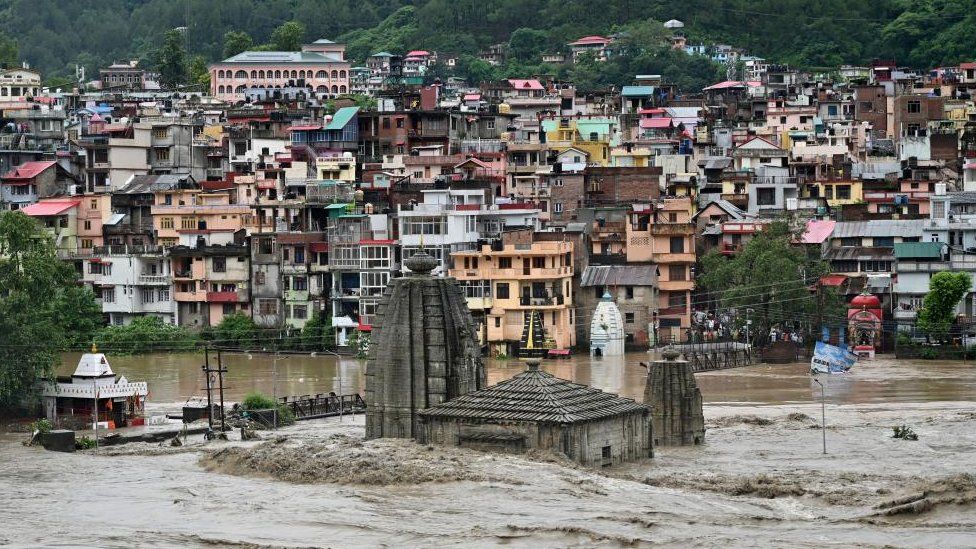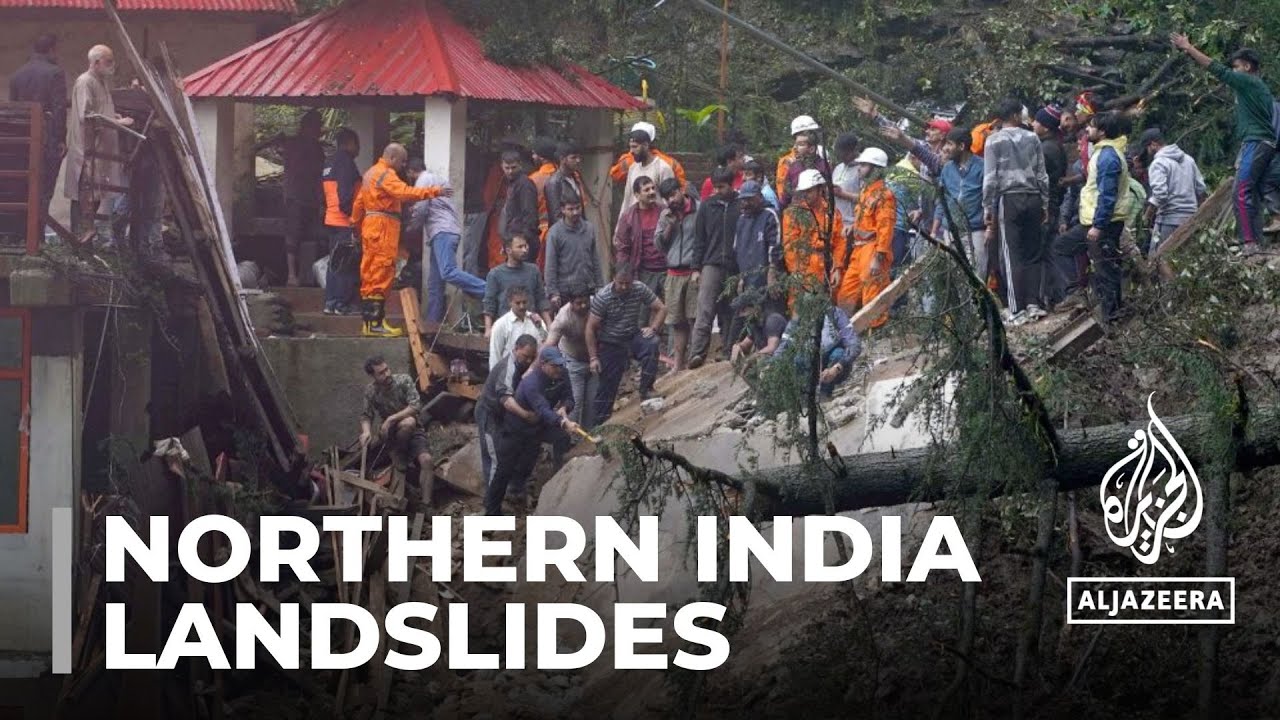Heavy Rains Strike Himachal Pradesh, Almost 50 People Dead In 24 Hours
When heavy rains strike Himachal Pradesh, almost 50 people dead in 24 hours in the picturesque hill state located in northern India.
Author:Suleman ShahReviewer:Han JuAug 15, 202310.1K Shares242.1K Views

When heavy rains strike Himachal Pradesh, almost 50 people dead in 24 hoursin the picturesque hill state located in northern India.
The state, known for its cool weather and stunning scenery, has been grappling with the devastating consequences of heavy rains, landslides, and flash floods, leaving a trail of destruction in its wake.
Temple Collapse Claims Lives
One of the most heart-wrenching incidents involved the collapse of a temple in the capital city of Shimla, where at least nine individuals lost their lives.
Trapped beneath the debris, officials fear that more lives may be at risk as rescue efforts continue.
The state's Chief Minister, Sukhvinder Singh Sukhu, confirmed that the heavy rains triggered a series of landslides and flash floods, exacerbating the perilous situation.

Floods and landslides kill nearly 50 people in India’s Himalayas
Infrastructure Ravaged
The torrential rains have wreaked havoc on the state's infrastructure, with hundreds of roads rendered impassable and sections of the renowned Kalka-Shimla railway being washed away.
The damage to transportation routes has further compounded the challenges faced by rescue and relief operations, hindering their ability to reach affected areas efficiently.
Chief Minister Sukhvinder Singh Sukhu took to social media platform X to share updates on the unfolding disaster.
He reported a flash flood and cloudburst that occurred in other parts of the state, resulting in the tragic demise of 14 individuals.
Additionally, he posted a video capturing the terrifying force of floodwaters in Mandi, where seven lives were tragically swept away by the powerful currents.
Tourist Haven Turned Tragedy Zone
Himachal Pradesh is a popular tourist destination, especially its capital Shimla, renowned for its serene climate and picturesque landscapes.
However, the state's appeal has been overshadowed by the relentless monsoon rains, which have triggered flooding, landslides, and cloudbursts.
The recent incidents have turned this haven into a tragedy zone, raising concerns about the safety of both tourists and residents alike.
Climate Change's Role In The Disaster
While several factors contribute to the severity of the flooding and associated tragedies, climate changelooms large as a significant catalyst.
The warming atmosphere, driven by the effects of climate change, increases the likelihood of extreme rainfall events.
With global temperatures already having risen by approximately 1.1 degrees Celsius since the dawn of the industrial era, the urgency of reducing emissions and curbing climate change's impact becomes paramount.
In response to the ongoing crisis, Chief Minister Sukhvinder Singh Sukhu has issued a heartfelt appeal to citizens to exercise caution and remain indoors, away from the danger posed by overflowing rivers and unstable infrastructure.
The situation remains volatile, with incessant rains continuing to pose a threat to the region's stability.
The neighboring state of Uttarakhand has also fallen victim to relentless rain, as officials fear the loss of lifedue to landslides and related incidents.
This state, known for its revered Hindu shrines and vibrant tourism, has suffered disruptions in pilgrimage routes and infrastructural damage.
The Char Dham Yatra, a significant pilgrimage for Hindus, has been temporarily suspended due to the inclement weather.
Environmental Concerns Amplified
Environmentalists have long voiced concerns about the ecological fragility of the Himalayan states in India.
Infrastructural changes designed to accommodate the influx of tourists have raised alarms about the potential havoc that could be wreaked during extreme weather events.
The combination of such changes with the intensifying impact of climate change has amplified these concerns, emphasizing the urgent need for sustainable and responsible development.
The tragic events unfolding in Himachal Pradesh serve as a stark reminder of the interconnectedness between climate change, infrastructure, and disaster resilience.
As the state and the country grapple with the aftermath of these rain-related incidents, a collective call to action emerges—one that demands heightened attention to climate change mitigation, responsible tourism, and infrastructure that can withstand the wrath of nature.
Final Words
In the wake of the devastating rain-related incidents that have claimed nearly 50 lives in Himachal Pradesh, the urgent need for climate-conscious action and disaster preparedness has become glaringly evident.
The intertwined forces of climate change and unsustainable development have left this picturesque region reeling from tragedy.
As Himachal Pradesh and neighboring Uttarakhand struggle to recover, it is a poignant reminder that a harmonious balance between nature, infrastructure, and climate resilience is not just a luxury but an imperative for the well-being of both local communities and the environment.
The events serve as a somber call to action for governments, communities, and individuals to collectively prioritize sustainable practices, climate adaptation, and responsible development to safeguard the future of vulnerable regions.

Suleman Shah
Author
Suleman Shah is a researcher and freelance writer. As a researcher, he has worked with MNS University of Agriculture, Multan (Pakistan) and Texas A & M University (USA). He regularly writes science articles and blogs for science news website immersse.com and open access publishers OA Publishing London and Scientific Times. He loves to keep himself updated on scientific developments and convert these developments into everyday language to update the readers about the developments in the scientific era. His primary research focus is Plant sciences, and he contributed to this field by publishing his research in scientific journals and presenting his work at many Conferences.
Shah graduated from the University of Agriculture Faisalabad (Pakistan) and started his professional carrier with Jaffer Agro Services and later with the Agriculture Department of the Government of Pakistan. His research interest compelled and attracted him to proceed with his carrier in Plant sciences research. So, he started his Ph.D. in Soil Science at MNS University of Agriculture Multan (Pakistan). Later, he started working as a visiting scholar with Texas A&M University (USA).
Shah’s experience with big Open Excess publishers like Springers, Frontiers, MDPI, etc., testified to his belief in Open Access as a barrier-removing mechanism between researchers and the readers of their research. Shah believes that Open Access is revolutionizing the publication process and benefitting research in all fields.

Han Ju
Reviewer
Hello! I'm Han Ju, the heart behind World Wide Journals. My life is a unique tapestry woven from the threads of news, spirituality, and science, enriched by melodies from my guitar. Raised amidst tales of the ancient and the arcane, I developed a keen eye for the stories that truly matter. Through my work, I seek to bridge the seen with the unseen, marrying the rigor of science with the depth of spirituality.
Each article at World Wide Journals is a piece of this ongoing quest, blending analysis with personal reflection. Whether exploring quantum frontiers or strumming chords under the stars, my aim is to inspire and provoke thought, inviting you into a world where every discovery is a note in the grand symphony of existence.
Welcome aboard this journey of insight and exploration, where curiosity leads and music guides.
Latest Articles
Popular Articles